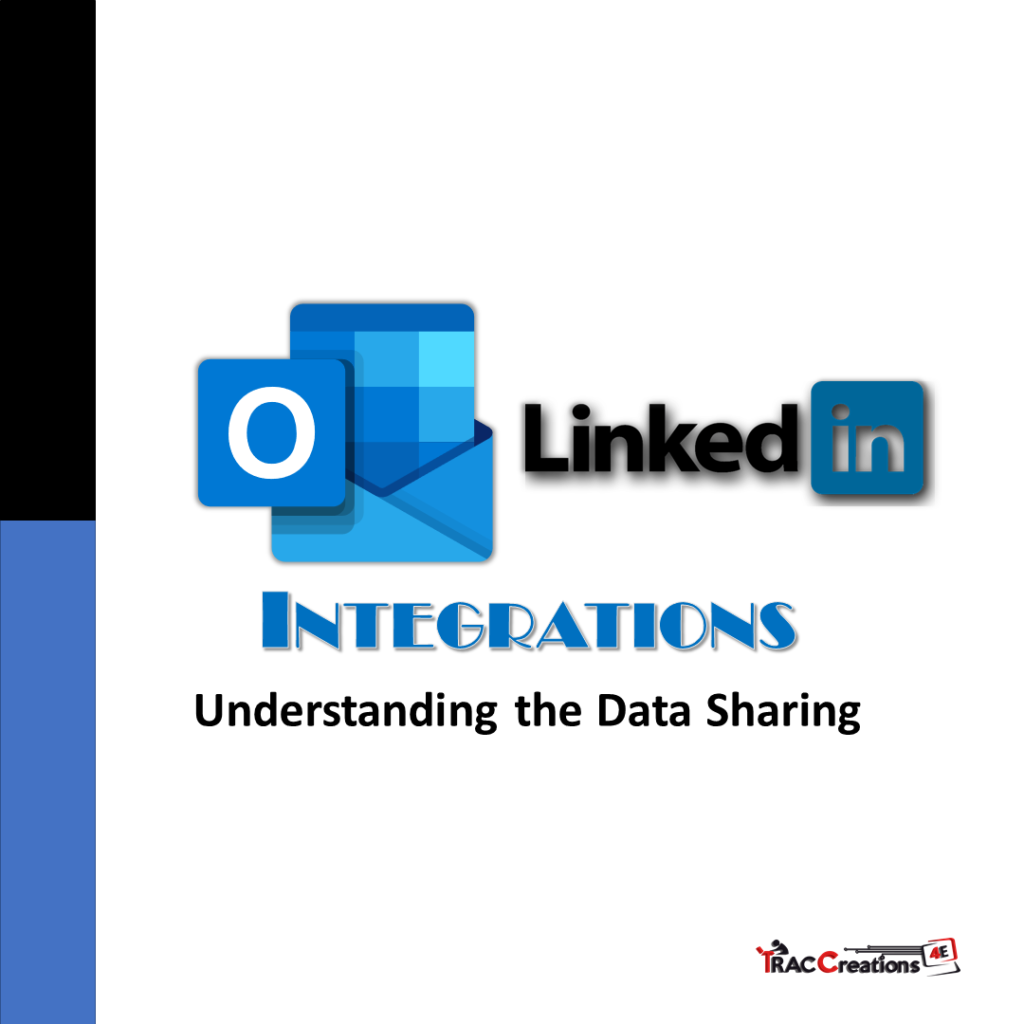Microsoft purchased LinkedIn for $26 Billion in 2019. Consequently, it only makes sense for the two products to integrate seamlessly. Microsoft made it easy to connect with LinkedIn through Outlook on the Web, SharePoint, and OneDrive for Business.
As a result, a LinkedIn icon appears on an individual’s Outlook contact card. The icon indicates a direct connection to the LinkedIn profile without leaving Outlook. Pretty cool, right? Well, until I discovered LinkedIn shares profile details and activities to an unknown person in the Outlook app. I panicked.
At a personal level, I am not sure if I want some of my Outlook or LinkedIn details readily available. I begin to ask the following questions. Is my LinkedIn profile open to people that I don’t know? And, how much data sharing is outside of my connection?
On the other hand, from a business perspective, the integration is efficient. For example, you can sync the LinkedIn Scheduler app with Outlook to manage interview appointments. The app also displays your availability so that candidates can schedule or rebook from any device.
So, here is my understanding of Microsoft and LinkedIn integrations data sharing.
Who is impacted by Microsoft and Linkedin Data Sharing?
To no surprise, anyone logging into a Microsoft Work/School or Personal Account and your company has enabled the integration services. The data sharing involves Microsoft, LinkedIn, and their partnering services.
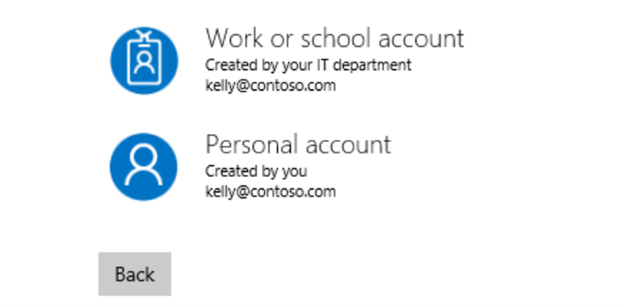
Everyone may see LinkedIn’s public data. And, if you do not have a LinkedIn account, the profile details still display within Outlook. For instance, see the demonstrations below. Note: I used Nestor Wilke, a fake user, from Microsoft 365 dummy account. I am not exposing a person’s details.
In Outlook or Exchange, you can double-click on an email address. The contact card opens in the Overview tab. As a result, LinkedIn gives suggestions that match first or last name regardless if you know them or not.
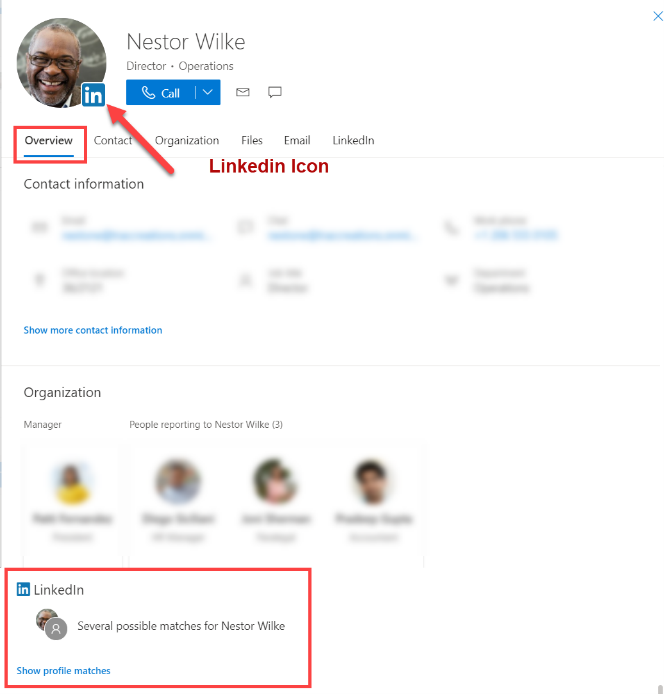
In addition, if you have any public activities, it appears in the Overview tab.
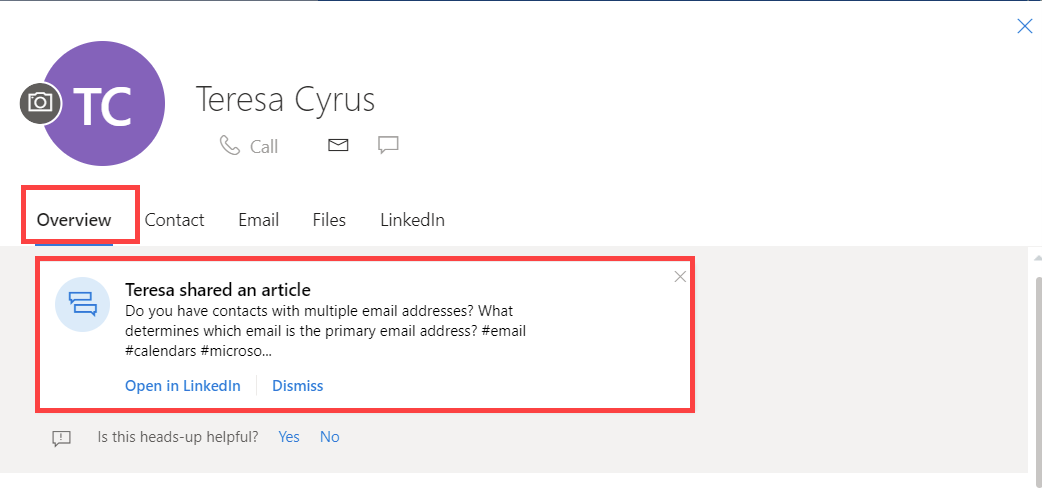
When you click on the “Show profile matches” in the Overview tab, the link navigates the LinkedIn tab. There are three things to observe.
1) Your company has enabled the integration services. Still, you must initiate the service by clicking on the Sign in now link. As an outcome, you will have the total LinkedIn experience in read-only mode through Outlook.
2) For LinkedIn members, your information will appear in someone’s suggestions until you modify the privacy settings.
3) The disclaimer warns that a profile may not be visible due to an individual’s privacy settings.
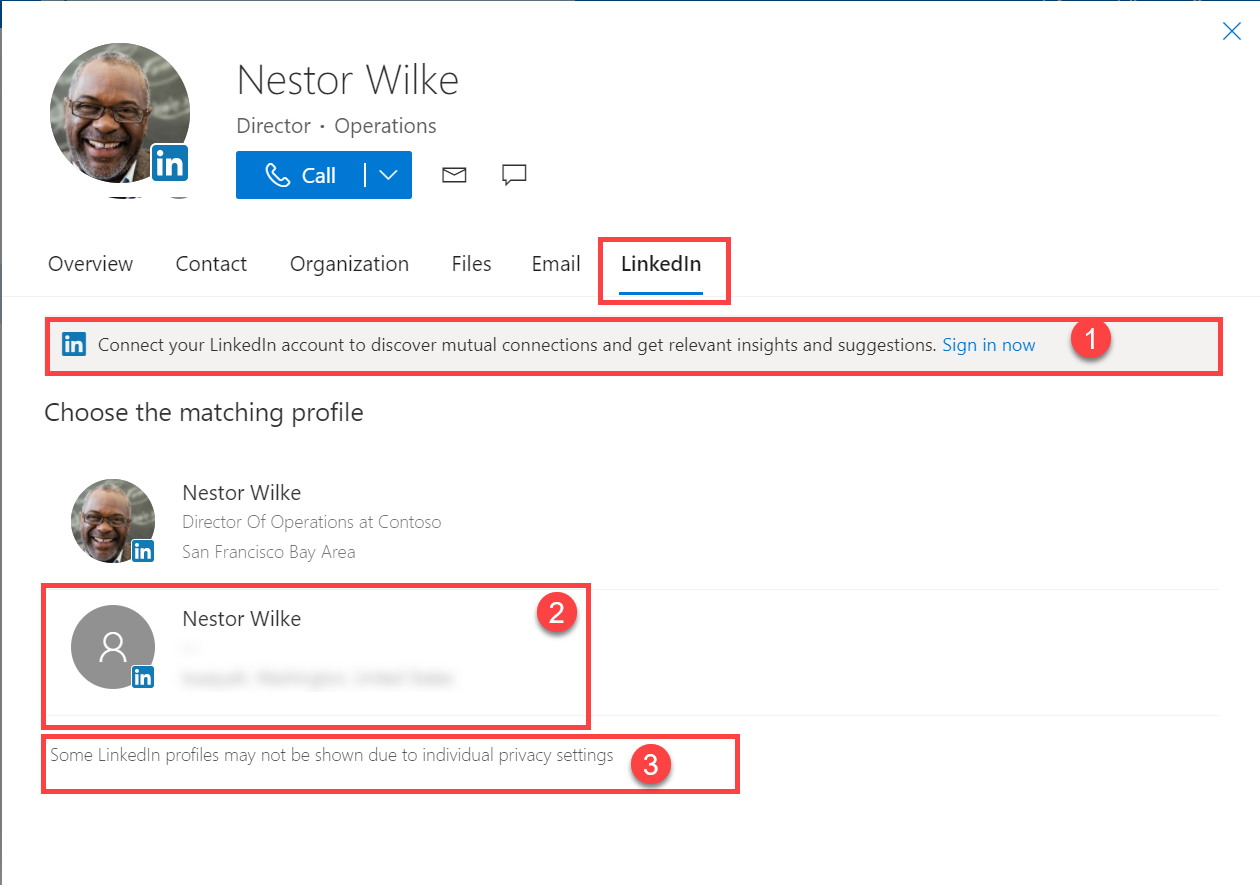
Who has access to Microsoft and Linkedin Shared Data
A Linkedin network expands three levels outside the “safe” connection.
The first-degree (safe) network represents people you know and verified personal or professional relationships. You are comfortable sharing data with this group. However, the second-degree connection may include recognized acquaintances but members of the secure network. You are not too concerned about these people having access to your data via LinkedIn or Outlook. In contrast, the third-degree (passive) interactions involve unknown ties through the previous channel. You probably don’t know these members and have doubts about being readily available to you through Outlook. Lastly, many members may locate the profile details through LinkedIn groups and search engines.
Regardless of safe or clueless connections, LinkedIn privacy settings need evaluating to give approved people the right to see your data.
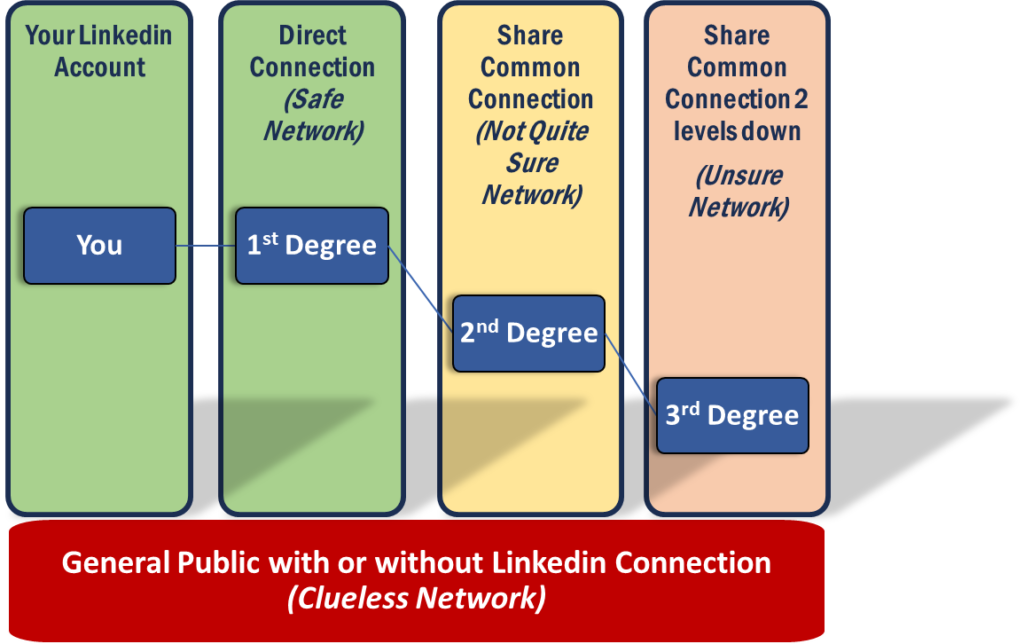
Who are some of the Microsoft and Linkedin partners and services?
You permitted Microsoft to collect and share data from partnering apps and services you use. At the time or this post, here are a few, but I am sure there will be more as Microsoft & LinkedIn evolve the networking functionalities.
- Browsers: Bing, Google, Yahoo
- Apps: Microsoft Apps & Services, Cortana, Evernote, Twitter
- Google, Apple, and Samsung’s email, contacts, and scheduling
What information are Microsoft and LinkedIn sharing with the partnered services?
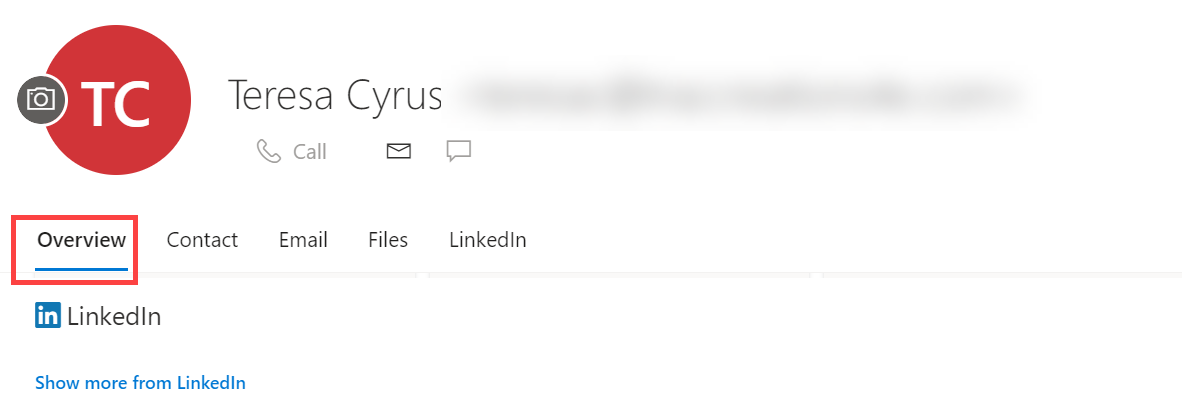
Linkedin Tab
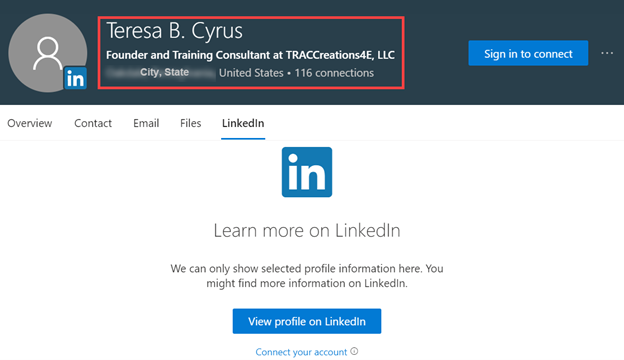

The 4E Takeaway
In closing, I was blindsided by Microsoft and LinkedIn integration, specifically, the data sharing. The integration shared many of your profile details with others, applications, and partnering services.
Ecstatically, you can control how your profile is discovered, displayed, and used for job search or recruiting, marketing and sales leads, and mentoring for career development. And, once your privacy settings are correctly configured for your personal or business needs, then logging into your LinkedIn account through Outlook may not be so bad after all.
Check out the blog post How to Change Privacy Settings in LinkedIn? I covered some key privacy settings that you can review and adjust accordingly to your requirements.
Additional Resources:
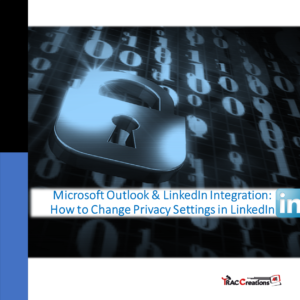
Microsoft Outlook and LinkedIn Integration: How to Change Privacy Settings in LinkedIn?
Learn more
